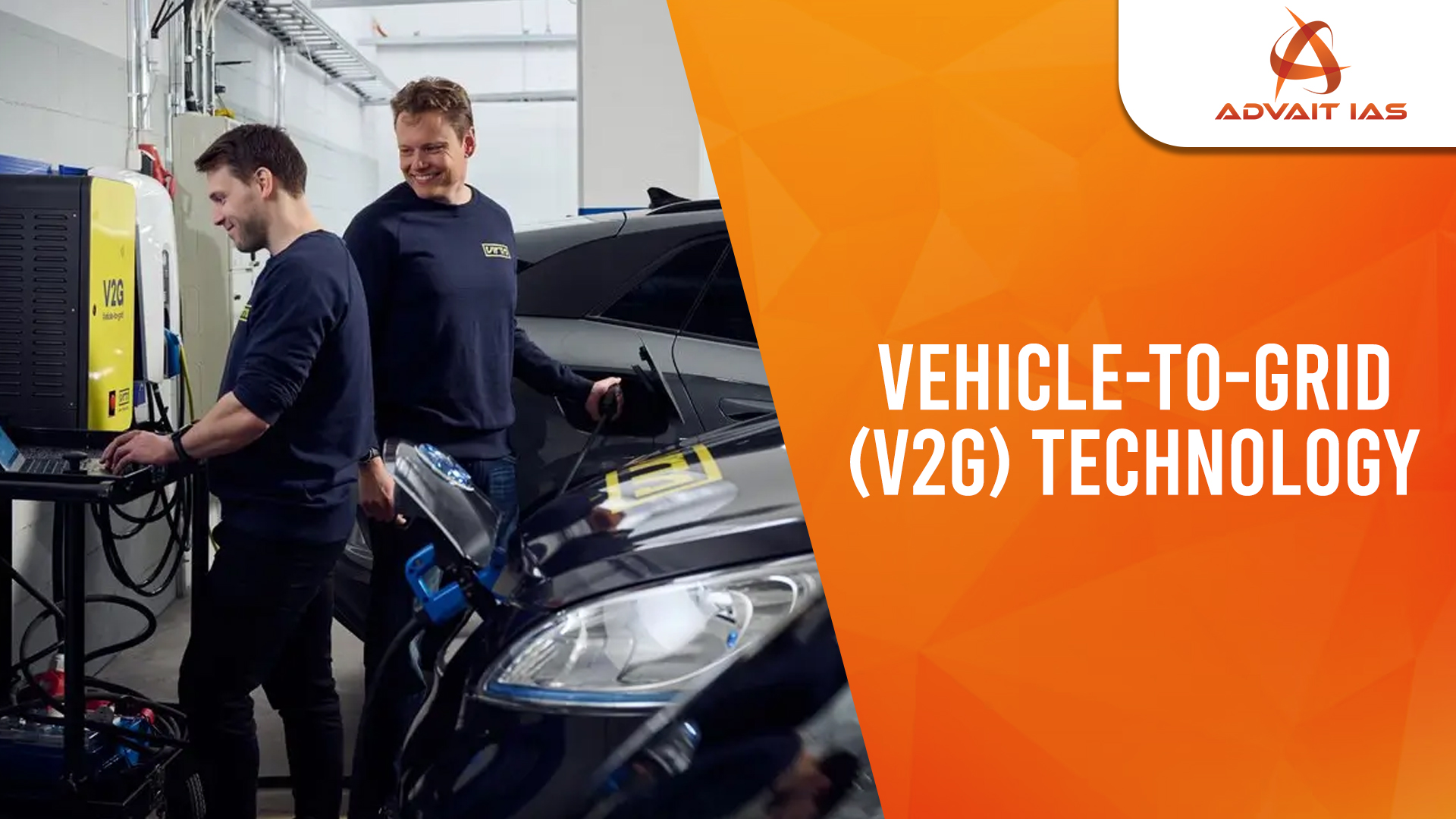What is V2G (Vehicle-to-Grid) Technology?
- Definition: V2G is a bi-directional energy transfer technology that enables electric vehicles (EVs) to send electricity back to the power grid when idle.
- How it works:
- EVs act as decentralised energy storage units.
- Requires bi-directional chargers for charging (G2V) and discharging (V2G).
- Other Related Technologies:
- V2H: Vehicle to Home – powers home appliances during outages.
- V2V: Vehicle to Vehicle – transfers charge between EVs.
- Potential Benefits:
- Grid balancing.
- Peak load shaving.
- Integration of intermittent Renewable Energy (RE).
- Emergency power during climate-related disasters.
Global Applications of V2G
- Europe (UK, Netherlands):
- EV owners paid for supplying power during peak hours.
- USA (California):
- V2G used in ancillary power markets to enhance grid stability.
- Benefits Realized:
- Reduced grid instability from variable RE supply.
- Compensation high enough to incentivize EV participation.
- Acts as a resilient backup during power outages.
V2G Status in India
- Stage: Still in nascent phase.
- Key Developments:
- Central Electricity Authority (CEA) formed a committee to explore reverse charging guidelines.
- Focus remains on EV charging infrastructure, not energy feedback.
- Challenges:
- Rigid electricity market structure.
- No dynamic pricing or incentives for decentralised storage.
- Grid unprepared for variability from both RE and EVs.
- Need:
- Regulatory reforms.
- Smart charging as a precursor.
- Incentive mechanisms for user participation.
KSEB–IIT Bombay V2G Pilot Project: Kerala’s Initiative
- Objective: Assess the feasibility of using EVs to support the grid during evening peak demand (when solar power dips).
- Context:
- Kerala has seen:
- Rapid EV adoption.
- High rooftop solar installation.
- Concern over grid stress during non-solar hours.
- Kerala has seen:
- Scope:
- Study smart chargers, battery dispatch, and peak demand management.
- Use EVs as a grid support asset.






